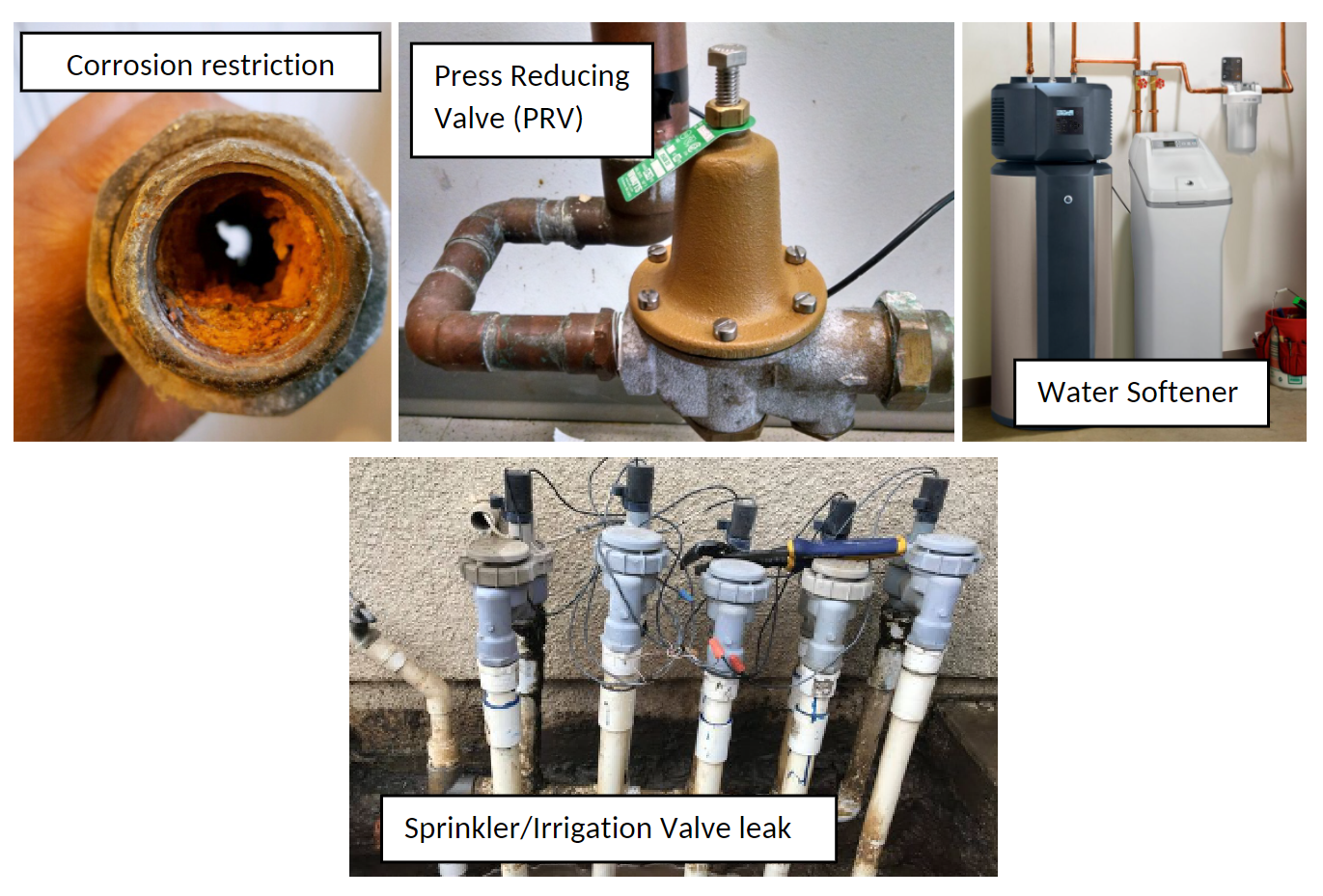Question 1 – Why is my pressure low when I use a faucet or plumbing fixture in my house or yard?
Answer 1 – Most likely, you have a low-flow problem and not a low-pressure problem. In most cases low flow is the result of problems or deterioration with a customer’s private plumbing and fixtures that restrict flow. The problem could be one of the following issues with the customer plumbing system:
a. Malfunctioning or failed Water Pressure Regulator (usually located where the houseline enters the home).
b. Faulty sprinkler valve or solenoid
c. Restricted houseline (internal pipe corrosion, small pipe size, long pipe run, multiple bends on the pipe between the meter and the dwelling)
d. Water Softener restricting flow.
e. Restriction in house plumbing (old deteriorated galvanized plumbing with internal corrosion)
f. Clogged plumbing fixture (hose bib, faucet aerator, water heater, dishwasher, etc.). Fixtures can become clogged with rust, calcium build-up, etc.

Question 2 – Who is responsible for customer plumbing?
Answer 2 – The customer is responsible for the plumbing downstream of the water meter. The cost of repairs or water loss occurring downstream of the meter is the responsibility of the customer. The utility is responsible for the water system upstream of and including the water meter.
Note: For a small monthly fee Suburban offers its customers the “Lifeline” service line maintenance program that repairs or replaces leaking pipeline between the utility meter and the house shutoff valve. See Suburban’s website for information about Lifeline.
Question 3 – Does the utility’s system pressure fluctuate?
Answer 3 – Yes, a water system’s pressure varies throughout the day depending on customer demand and when utility facilities are operating. However, these pressure fluctuations are relatively minor and do not usually contribute to low flow in an individual customer’s plumbing system. More likely, low flow is resulting from an issue with customers’ plumbing.
Question 4 – How does internal pipe corrosion cause low flow?
Answer 4 – The term we use to describe this is head loss, which occurs when flowing water is exposed to friction that absorbs energy from the flowing water and reduces its flow rate. Friction occurs when water contacts surfaces inside plumbing pipes and fixtures. Pipe with rough internal surfaces, as is the case when metal pipe is corroded, impart a lot of friction on flowing water. Bends and fixtures can also impose friction on flowing water.
Question 5 – How does a pipe restriction cause low flow?
Answer 5 – A pipe restriction reduces the open area that water can pass through. When the same amount of water passes through a smaller opening, it must move faster. Moving faster increases the water’s velocity, resulting in more friction (head loss), taking more energy out of the water, and resulting in low flow.
Disclaimer: Suggestions of potential problems or solutions regarding customer plumbing provided by Suburban Water Systems and its agents are provided as a courtesy. Suburban is not responsible or liable for costs and service interruptions resulting from customers investigating, repairing, or replacing plumbing downstream of the water meter.
